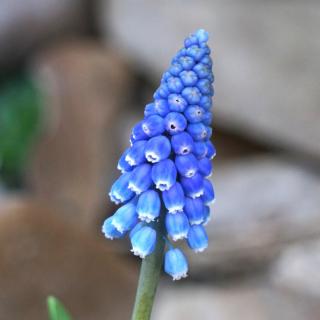

Blue flowers are a favorite these days in many gardens. Why so?
And can you succeed in growing a sea of blue flowers in the garden without having to overturn every square inch of it?
Read also :
Blue is the color of trust and willpower. This color brings out peace of mind and of heart, a subtle change of mindset that most are usually unaware of. The power of colors is unfathomable. It shouldn’t thus come as a surprise that people prefer growing blue flowers in their gardens. How can this happen without wrecking havoc in your garden as it stands today?
Plant bulb flowers! They’ll spill out rivers of blue all over your garden right from the beginning of Spring.

To help you out, here is a short list of some of the best blue bulb flowers. This will help you select the nicest ones for your own garden. Which will turn out to be your favorite?
After buying your bulbs, come the time to plant them in either garden or in pots. It’s preferable to get this done anytime from September to December (included). Make sure the bulbs are in the ground before it starts freezing.
Step 1:
Remove weeds and small rocks, and then mix a little fresh soil mix into the ground soil. This helps increase drainage.
Step 2:
Dig holes in the ground, not too deep. You can either make them a bit wide to plant large clusters of bulbs, or make them narrow to only have two or three bulbs growing in the same spot. The size of the bulb itself is what determines the planting depth. Large bulbs (2 inches / 5 cm and over) need a depth of 6 inches (15 cm). Smaller bulbs (1 to 2 inches or 2.5 to 5 cm), on the other hand, only require a hole 3 to 4 inches deep (7 to 10 cm).
Step 3:
Delicately place the bulbs in the hole. Set them upright, with the pointy tip facing upwards. Don’t press them down too strongly into the ground, you’ll risk damaging them. Large bulbs are best when spaced by about 3 to 8 inches (7 to 20 cm). Smaller ones look great when only set 1 to 3 inches apart (3 to 7 cm).
Step 4:
Backfill the hole with the left over garden soil.
Step 5:
If the soil is dry, pour a little water over the hole.
©Ibulb